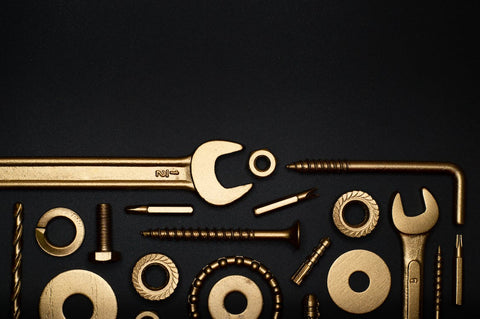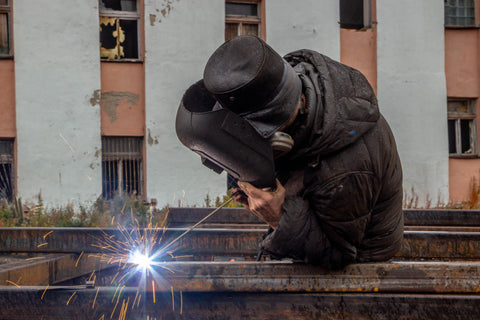Choosing the Right Hardware Tools for Your DIY Project
Welcome to our guide on selecting the ideal hardware tools for your DIY project. As a DIY enthusiast, choosing the right tools for the job can be daunting, but it doesn't have to be. In this section, we will explore the different types of tools available and how to determine which ones are best suited for your specific project.
With the right tools, you can achieve professional-looking results, and we're here to help you do just that. So, let's dive in and find the perfect tools for your DIY project!

Understanding the Different Types of Hardware Tools
When it comes to DIY projects, having the right hardware tools is essential to achieving success. There are a variety of different tools available, each designed to serve a specific purpose. Here, we'll take a closer look at the most common types of hardware tools you'll encounter in your DIY projects.
Hand Tools

Hand tools are some of the most basic and essential hardware tools. They can be used for a variety of tasks, from simple repairs to more complex installations. Common hand tools include wrenches, pliers, screwdrivers, and hammers, each with its own specific function. For example, a wrench is used to tighten or loosen nuts and bolts, while a hammer drives nails or breaks things apart.
Power Tools

Power tools are electric or battery-powered tools that can help make DIY projects faster and easier. They can be a bit more expensive than hand tools, but they often offer increased precision and efficiency. Common power tools include drills, saws, sanders, and grinders. For example, a drill can be used for creating holes in wood or metal, while a saw can be used for cutting through various materials.
Garden Tools

For DIY projects that involve gardening or landscaping, garden tools are a must. These tools include everything from shovels and rakes to pruners and hedge trimmers. They are designed to help you maintain and shape your outdoor spaces. For example, a shovel can be used for digging holes or moving soil, while a pruner can be used for cutting back branches and leaves.
Note: It's important to choose the right tool for the job. Using the wrong type of tool can result in damage to your materials or even cause injury.
Essential Tools for Every DIY Toolkit
Whether you're an amateur DIY enthusiast or a seasoned pro, having a well-stocked toolkit is essential to ensure you have the right tools for the job. Here are some essential hardware tools that should be in every DIY toolkit:
|
Tool |
Purpose |
|
Hammer |
Used to drive nails into wood or other materials, as well as for general demolition and construction tasks. |
|
Screwdriver Set |
Includes a variety of sizes and types of screwdrivers for various tasks like tightening screws, assembling furniture, or repairing appliances. |
|
Adjustable Wrench |
Used for tightening or loosening nuts and bolts of various sizes. |
|
Tape Measure |
Essential for measuring and marking materials to cut or assemble. |
|
Level |
Used to ensure a surface or object is perfectly level, important for hanging shelves, pictures, and other objects. |
|
Pliers |
Used for gripping, cutting, and bending wires, as well as for general DIY tasks. |
|
Utility Knife |
Used for cutting materials such as drywall, carpet, foam, and other materials. |
These essential tools should be in every DIY enthusiast's toolkit to ensure that they are ready to tackle any project that comes their way. Make sure you invest in high-quality tools that will last for years to come, and always keep them in good condition to ensure optimal performance.
Choosing the Right Tools for Your Specific Project
With so many hardware tools available, selecting the right ones for your DIY project may seem daunting. However, there are several factors to consider that can help make the decision-making process easier.
Firstly, consider the specific requirements of your project. What tools are essential to complete the job? Take into account the size and complexity of the project, as well as any specific materials involved.
Secondly, evaluate your personal skill level. Are you an experienced DIY enthusiast or a beginner? This will help determine the level of complexity of the tools you require. For example, a power saw may be necessary for a more advanced woodwork project, but a handsaw may suffice for a simpler project.
Thirdly, consider your budget. Quality tools are an investment that will last longer and perform better, but they often come at a higher cost. Determine how much you are willing to spend and prioritize the essential tools for your project.
Factors to Consider When Choosing Hardware Tools
Project Requirements
|
Tool |
Project Requirement |
|
Hammer |
Nailing and striking tasks |
|
Screwdriver |
Driving screws |
|
Power Drill |
Drilling holes and driving screws with precision and speed |
|
Handsaw |
Cutting wood and other materials by hand |
|
Power Saw |
Cutting wood and other materials with speed and accuracy |
Personal Skill Level
- Beginner - Basic hand tools such as a hammer, screwdriver, and pliers
- Intermediate - Advanced hand tools such as a handsaw and clamps, as well as some power tools such as a power drill
- Advanced - A wider range of power tools such as a circular saw and jigsaw, as well as specialized tools for specific tasks
Budget
Invest in quality tools for long-term use and better performance. Consider purchasing tools that serve multiple purposes, such as a power drill with interchangeable bits.
By taking into account these factors, you can confidently select the right hardware tools for your specific DIY project. Remember to always prioritize safety by wearing appropriate protective gear and following all safety guidelines.
Tips for Properly Maintaining Your Hardware Tools
Proper maintenance of your hardware tools is essential to keep them in good condition and extend their lifespan. Here are some practical tips to help you keep your tools in top shape:
- Clean your tools after every use: Use a dry cloth to wipe off any dirt or debris and a brush to remove any stubborn grime.
- Keep your tools dry: Moisture can cause rust and corrosion, so make sure to dry your tools thoroughly after cleaning them. Store them in a dry area to avoid humidity.
- Oil metal parts: Apply a small amount of oil to metal parts to prevent rust and keep them lubricated. Be sure to wipe off the excess oil to avoid attracting dust and dirt.
- Sharpen cutting tools: Keep cutting tools, such as saws and chisels, sharp to ensure they work properly. Follow the manufacturer's instructions for sharpening and use protective gear when handling these tools.
- Store your tools properly: Use a toolbox or storage container to keep your tools organized and protected. Avoid tossing them in a drawer or leaving them exposed to the elements.
Remember: Taking care of your tools is not only about prolonging their lifespan but also about ensuring your own safety. A well-maintained tool is less likely to break or malfunction during use, reducing the risk of accidents.
By following these simple tips, you can keep your hardware tools in excellent condition and enjoy safe and successful DIY projects for years to come.
Safety Precautions When Using Hardware Tools
While DIY projects can be fun and rewarding, it is essential to prioritize safety when working with hardware tools. Follow these precautions to ensure a safe and accident-free experience:
- Wear protective gear: Always wear eye goggles, gloves, and protective clothing when using power tools or sharp objects.
- Keep the work area clean and organized: A cluttered workspace can be hazardous and increase the risk of accidents. Keep the area clean and organized, and remove any tripping hazards.
- Read the manual: Be sure to read the user manual carefully before using any tool, and follow instructions closely.
- Avoid distractions: When using power tools, avoid talking on the phone or listening to music, as these distractions can cause accidents.
- Use the right tool: Use the appropriate tool for the task at hand. Using the wrong tool can be dangerous and cause damage to the tool or project.
- Inspect tools before use: Check tools for damage, wear, and tear before using them. Do not use damaged or broken tools, as they can cause accidents.
- Keep tools out of the reach of children: Store tools in a secure location out of the reach of children to prevent accidents.
By following these safety precautions, you can ensure a safe and enjoyable DIY experience. Remember, safety should always come first!
Frequently Asked Questions (FAQ) about DIY Hardware Tools
Are electric tools better than manual tools for DIY projects?
Both electric and manual tools have their advantages and limitations. Electric tools, such as drills, saws and sanders, are generally faster and more efficient. They are ideal for larger and more complex projects. Manual tools, such as hammers, screwdrivers and wrenches, are great for smaller and more precise jobs. You should choose the type of tool that best suits your project requirements and personal preferences.
Can I use the same hardware tools for different projects?
Yes, you can use the same hardware tools for different DIY projects as long as they are compatible with the specific project requirements. However, it is generally advisable to ensure that you have the appropriate tools for each project to ensure the best possible results.
How do I maintain my hardware tools?
Proper maintenance of hardware tools is essential to prolong their lifespan and ensure optimal performance. Here are some tips for maintaining your hardware tools:
- Clean tools after each use with a dry cloth
- Lubricate moving parts regularly
- Store tools in a dry and organized place
- Sharpen blades and bits when needed
- Replace damaged or worn out parts immediately
How do I choose the right tools for my DIY project?
To choose the right tools for your DIY project, you should consider various factors, such as:
- Project requirements
- Budget
- Personal skill level
- Safety requirements
By assessing these factors, you can determine which tools are most appropriate for the job and select them accordingly.
What safety precautions should I take when using hardware tools?
Safety precautions when using hardware tools are essential to reduce the risk of accidents and injuries. Here are some guidelines to follow:
- Familiarize yourself with the tool and read its manual
- Wear appropriate protective gear, such as gloves and safety glasses
- Keep the work area clean and organized
- Do not use damaged or worn-out tools
- Avoid distractions and focus on the task
- Keep tools out of reach of children
By following these guidelines, you can minimize the risk of accidents and ensure a safe DIY experience.
